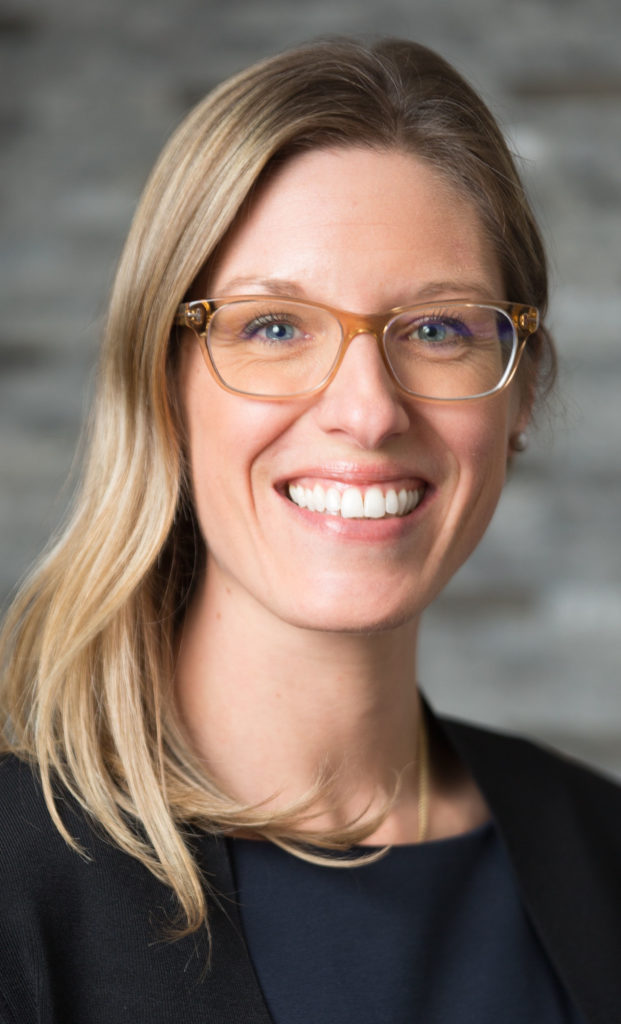Sponsored Content

By Jennifer L. Stewart, OD
Jan. 15, 2020
Capture rate is a key performance indicator (KPI) in managing an optometric practice. It reflects the health of our practice and literally tells us how we’re doing. Being able to drill down into a number of aspects of capture rate also can provide great growth strategies.
Improving capture rate is the most critical step in increasing profits, even more important than increasing the numbers of patients we see. We all work hard to drive more patients in the door, and that is important, but the payoff is even greater when we tell patients who sit in our exam chairs about new, premium options that can improve their visual experience with work, sports and everyday activities–and when we capture those sales.
In our practice, we have managed with analytics for more than a decade, and today we rely on EDGEPro by GPN Technologies to generate and highlight data that is more detailed and varied than ever before. Further, the data we track has applications both in improving overall practice performance and in managing our professional and optical staff.
Capture Rate Measures How Well We Communicate
We define capture rate the following way: How many of our patients are fulfilling the treatment plan that we prescribe? How many patients are following through and getting a complete set of eyewear or contact lenses, and how many get Transitions on non-glare lenses, for example.
It’s important to look at capture rate in terms of how many patients are having a refractive exam, not just any visit. We sort this out from patients coming in for a glaucoma evaluation or a red eye.
While capture rate tracks sales, it also provides a critical measure of how well we communicate. What are we saying in the exam room that is reinforced in the optical? How well is that common message delivered?
Drill Down Into Capture Rate
With EDGEPro, we drill down deeply into various areas of capture rate: AR sales, second-pair sales, percentage of premium lenses. In fact, we customize our tracking to readily show areas where we’re up or down.
Other Articles to Explore
We sort capture rates by frame lines to see how well they are working or not. We sort capture rate by insurance plans–then by price points per insurance plan–to evaluate if the plans are profitable to us or not.
We look at capture rate monthly, quarterly and yearly. We look at how each doctor is doing and each staff member.
No Emotion In Data
We all think our practices are great, but numbers tell the true story. For example, we think that we’re busy, and we may be, but are we profitable? How many of our patients are actually completing the transaction and purchasing a full set of eyewear?
I look at capture rate in several combinations: Overall, by doctor, by optical staff member. This shows if there is a disconnect with certain doctors. It shows if certain doctors and opticians are not working well together. Then we can readily address a situation where we need improvement.
Share Data With Staff
We share performance metrics like capture rate with staff. People like to know what’s going on. And we can use these to set growth goals.
We put growth goals in terms our staff understands. If we say we’re going to “increase AR capture rate by 20 percent,” that’s not a number that means anything. So we say, “I want you each to do two more sets of AR each day to meet our goal.” Small, tangible goals help staff to see the difference they can make.
We recently analyzed average frame price per sale, and we saw it was going down. We have a high capture rate, but are we capturing the right frames? We asked staff what they think. Are we showing the frames in the right order so that we’re helping patients to select frames with a better price point? Do we have the right frames mix? Are we mentioning price first or making price a secondary consideration? I ask my staff to help solve these problems.
Capture Rate By Insurance Benefits
We also look at whether or not patients are utilizing their insurance benefits to the full extent. This is especially important toward the end of the year. We explain to patients that if they have coverage for eyewear there is no reason they should not be getting a pair of glasses. Their regular pair may be fine, but do they have sports-specific eyewear? A second pair for backup? Prescription sunwear? Computer or reading glasses?
We want to ensure that patients are maximizing their insurance benefits and end-of-year flexible spending accounts. When patients are fully using their benefits, our capture rates rise. We discuss this at staff meetings, emphasizing they can help patients use their benefits before they expire.
New Personnel Can Affect Capture Rate
Two new associates joined us in the past several years. With new hires, we spend a lot of time in education and communication. We examine, do we talk about second pairs and sunglasses while in the exam room? Do we make sure our contact lenses patients have a backup pair of glasses? By looking at everyone’s numbers in these specific areas, we can have informed conversations about maximizing our capture rates. And we can share tools and scripting to improve capture rates.
Capture Rate Is a Management Tool
We meet with our opticians every few months and share capture rate data from EDGEPro. We don’t compare one optician to another; rather, we show them their own performance over time and ask: “I notice your capture rate has gone down, is there something going on? Are you talking about Transitions and premium progressive lenses? Are you emphasizing insurance benefits that can be used? Second pairs? How can I help?”
We talk about capture rate at staff meetings and strategize ways to drive it up. We have lunch’n’learns with industry reps that yield a lot of good ideas we can implement. We’re always learning about new products and trying to improve communication.
Use Capture Rate For Self-Evaluation
Finally, I use capture rates to measure how well I’m doing. I spend a lot of time with patients talking about hobbies and sports because I want to make sure they get the full range of products that can help them in their lives. I ask, “How far away is your computer?” and “Do you have prescription sunglasses?” I also talk about premium lenses. We have a high capture rate of anti-fatigue lenses because I discuss with patients how these can help them in their work. We use the highest quality of progressives, and when we discuss the benefits of these products, our capture rates reflect it.
But we have to measure carefully. I prescribe a premium set of lenses in the exam room, but is that what they’re getting on the optician’s side? If there is a disconnect there, I see it in the metrics, rather than looking at lab bills and wondering why there is a downturn.
In our old office, I overheard a lot of what was said in the optical, and I made notes to improve staff presentations. But we’ve moved to much larger offices, and the optical no longer is within earshot. That’s where tracking KPIs like capture rate with EDGEPro fills me in. I can see the problem early and remedy it with a conversation with an optician. By making a change early on, I can increase office efficiency and profitability so that everyone benefits.
 Jennifer Stewart, OD, is a partner in Norwalk Eye Care in Norwalk, Conn. She also is founder and COO of Performance 20/20, a sports vision training center in Stamford, Conn.
Jennifer Stewart, OD, is a partner in Norwalk Eye Care in Norwalk, Conn. She also is founder and COO of Performance 20/20, a sports vision training center in Stamford, Conn.

























